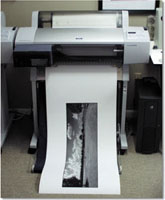Stitcher 3.5
Panoramic Image Creation At Its Best
While there are film camera
systems that are designed specifically to shoot panoramic images, digital
photographers are currently without an equitable product. Making the
task even more difficult is the fact that many of the professional-level
digital SLR cameras still have a focal length multiplier, which in many
cases makes a 20mm lens behave more like a 30mm lens. Using a wider
lens (around 14mm) often isn't the answer, as generally speaking
most lenses in this category exhibit too much distortion of the image.
|
|||
How The Process Works |
|||
System Requirements |
|||
The User Interface And
Options Assembling the panoramic image is a straightforward process. Images are dragged into the assembly window, oriented properly, and the user presses the enter key on the keyboard telling Stitcher to attach these two images. The whole process repeats itself until the panorama is complete. There are options in Stitcher to adjust the stitching camera properties, and to correct image distortion caused by camera lenses. The corrections that Stitcher uses to correct for a particular lens can be saved as a camera profile for use on future panorama projects. This is convenient for photographers because for each subsequent project that is shot with the same lens the distortion figures for that particular lens have already been calculated and need not be computed again. |
|||
Performance
|
|||
Other Features Summary |






































